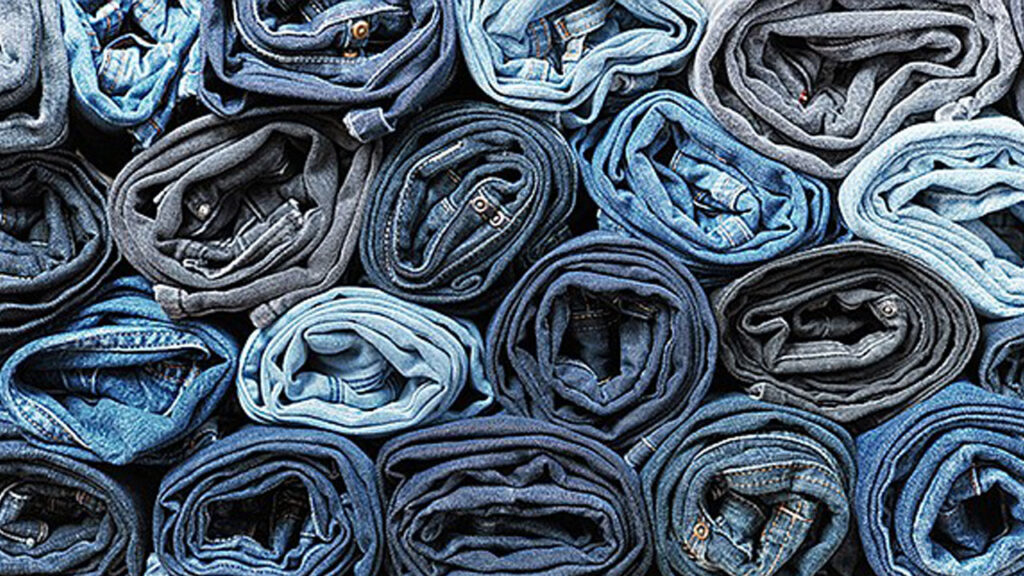The denim industry enters 2024 with experts expressing optimism for innovation and implementation of solutions that will help alleviate the ecological, social and supply-chain challenges that have prevented this category from progressing. While hurdles remain, this year brings hope of positive change as denim leaders band together to implement groundbreaking advancements to support the circular economy through reuse, conservation of resources and cleaner technologies.

Denim in 2024 will also see unique approaches to development as creatives explore fresh designs, new applications, and updated textiles and notions. Tapping into the avant-garde and artistic sides of denim will set apart leaders from the rest of the pack.
California Apparel News asked denim innovators: As we begin 2024, what priorities in design, sourcing and/or manufacturing will determine the direction of the denim industry throughout the year?

Selen Baltaci
Marketing Manager
Calik Denim
At this critical point in the global climate crisis, we foresee that trends focused on sustainability and contributing to the positive transformation of the world will be at the forefront in our sector in 2024. Recycled materials, pioneering technologies in the use of water and chemicals, and trends that will ensure maximum compliance with the circular economy will be at the forefront. In this regard, we dominate the sector with our RE/J concept containing 100 percent pre- and post-consumer material, our Dyepro technology, and our unique biodegradable innovation B210.
On the other hand, in denim trends other than sustainability, lightweight, drapey and soft-touch fabrics and authentic looks; overdyes and dirty, tinty looks; fewer marble effects; and clean-look rinse washes come to the forefront. Also, our Rawtech products, which we support with our E-Last technology, stand out with stabilized weft-shrinkage values.

Massimo Callegari
North America Manager
ISKO
There are several key priorities that will shape the trajectory of the denim industry in terms of design, sourcing and manufacturing. First and foremost, sustainability is set to remain a paramount focus, influencing every facet of the industry, from material choices to manufacturing processes. The pursuit of sustainable practices and circular-economy principles will guide design innovation and sourcing strategies. At ISKO, we believe there will be a much greater emphasis on the use of recycled fibers and materials. Our Ctrl+Z material science ticks these boxes as these fabrics comprise only recycled and regenerated fibers, and it is now used across our entire new collection.
Furthermore, the emphasis on technology integration to support this is expected to grow, transforming the manufacturing landscape. For example, ISKO’s parent company, SANKO, has created a new business venture called Re&Up, which is a textile-to-textile recycling company to enable the fashion and textile industry to shift to circularity. It uses a seamless, closed-loop ecosystem for end-of-life textile waste, offering valuable recycled-textile raw materials for the whole industry at scale.
I firmly believe that these will be the main principles that will determine the direction of the denim industry for 2024 and beyond.

Alberto Candiani
President and Owner
Candiani Denim
We saw 2023 going through massive inventories accumulated the year before, and the overall average product now looks dated and, frankly, pretty boring. I believe 2024 will need a big refresh in terms of design.
Expect loads of novelty fabrics with coatings and special finishings. Comfort stretch, coarse yarnsand heavy ring character in one direction, with more compact, 100 percent cotton constructions and flat looks in the other.
Washes and treatments will certainly play a big role in the redefinition of the aesthetics. Regenerative cotton has also impacted the sourcing, competing against organic as the new sustainable fiber story, and it may have a point.

Alberto de Conti
Head of Hub1922
Rudolf
From our perspective, three areas are likely to influence the sourcing and production of denim the most: supply-chain resilience, circular-economy initiatives and regulatory compliance.
Economic turmoil, high denim inventories and the long series of disruptions caused by the COVID-19 pandemic are constant reminders of the importance of resilient and flexible supply chains. All players along the denim and textile value chain need to evaluate and prioritize diversification tactics to improve supply-chain agility. Responsiveness instead of cost will be the new buzzword.
Adopting circular-economy principles, including recycling and upcycling, will become significantly more important. Companies have started to look for ways to reduce waste, use renewable energy as a raw material, increase the recyclability of textiles and promote a more sustainable life cycle for products.
Compliance with new, far-more-stringent environmental regulations, safety standards and other legal requirements will be critical for the denim industry. This applies in particular to entering or retaining European markets. To avoid disruption and reputational risk, it is of paramount importance for denim manufacturers to be aware of and adapt to regulatory changes.

Matteo Vivolo
Chief Sales Officer
Vivolo
Customization is something we believe will take the denim industry by storm in the coming year, with brands focusing on new, alternative and innovative ways to make a garment just that extra bit unique, the backside label being a case in point, a useful gateway as well as added value that allows brands to stand out along with their garments. Brands like to play with details and will be doing so increasingly, experimenting with a wide range of solutions, which can include embroidery, applications, color use, reliefs, metal customizations and so much more.
As far as materials go, suede and printed leather will be 2024’s top requests. We expect a consumer-centric vision of denim through which consumers can express tastes and identities by customizing every aspect—from fabric details to accessories—according to their own unique vision.
This will inevitably bring the consumer back to the center of in-store shopping to get that bespoke experience where choosing the right denim for them, from the fabric to the details, equates to expressing one’s identity. The first-person-choice process will also and above all result in even greater awareness regarding the use of environmentally sustainable materials and the enhancement of the most virtuous supply chains.
Per leggere l’articolo completo clicca qui